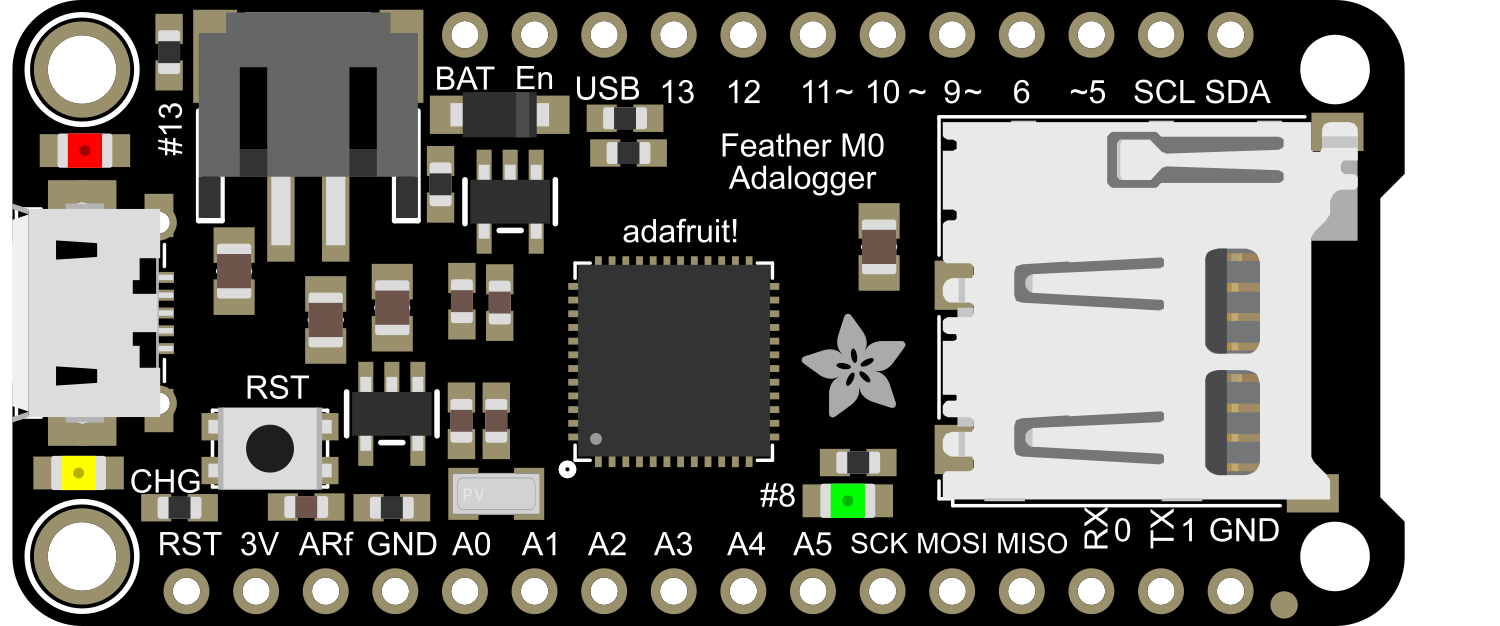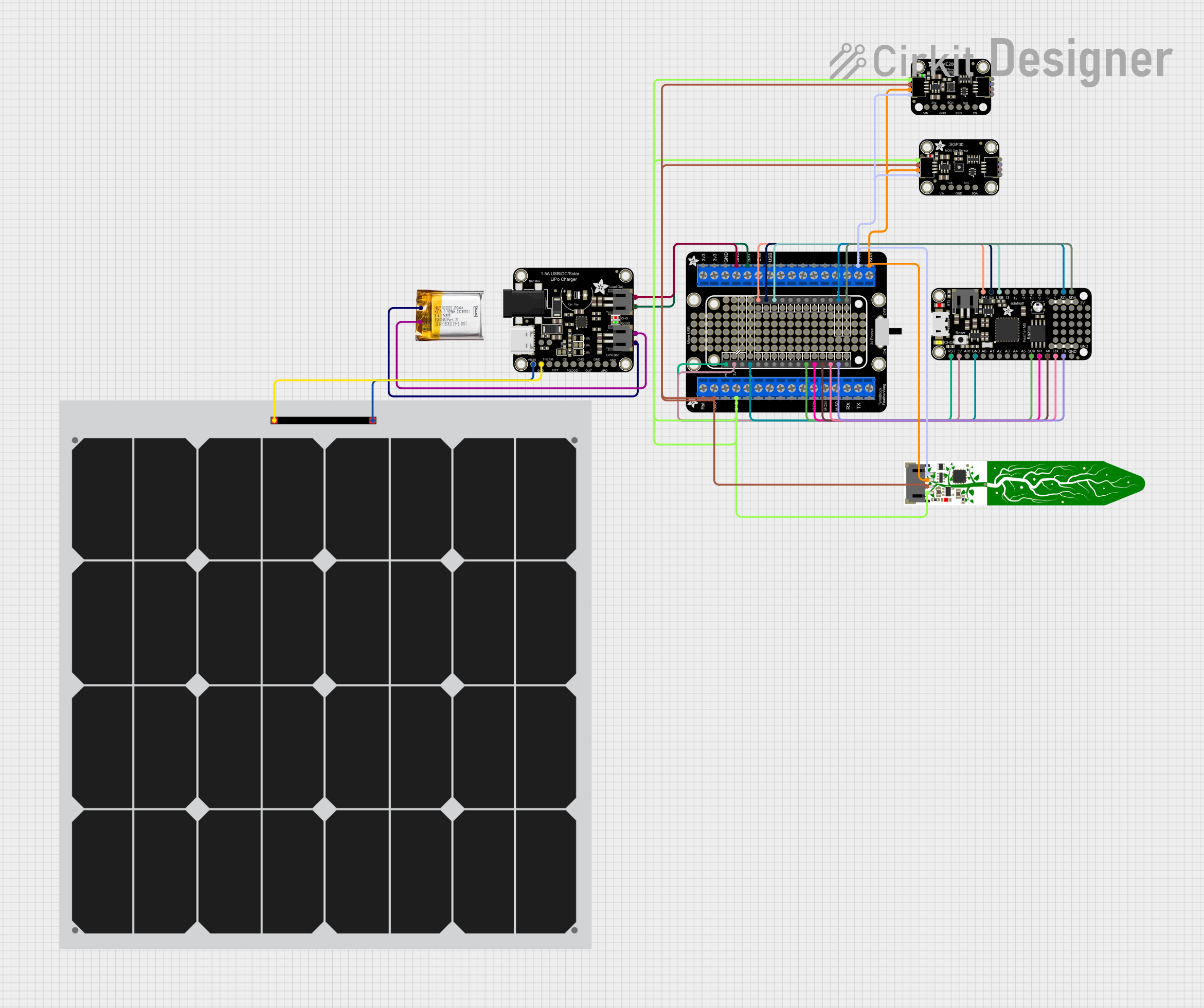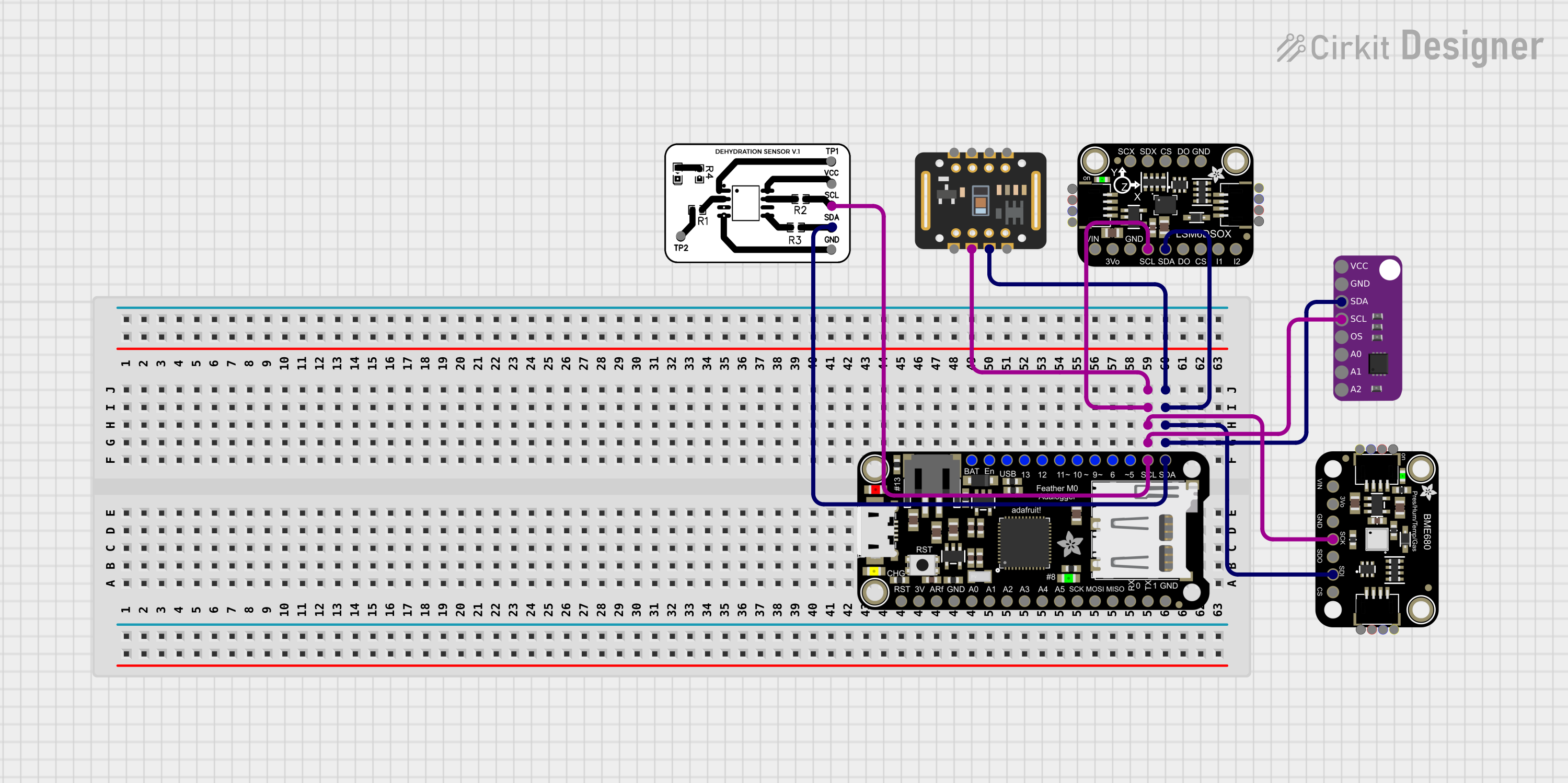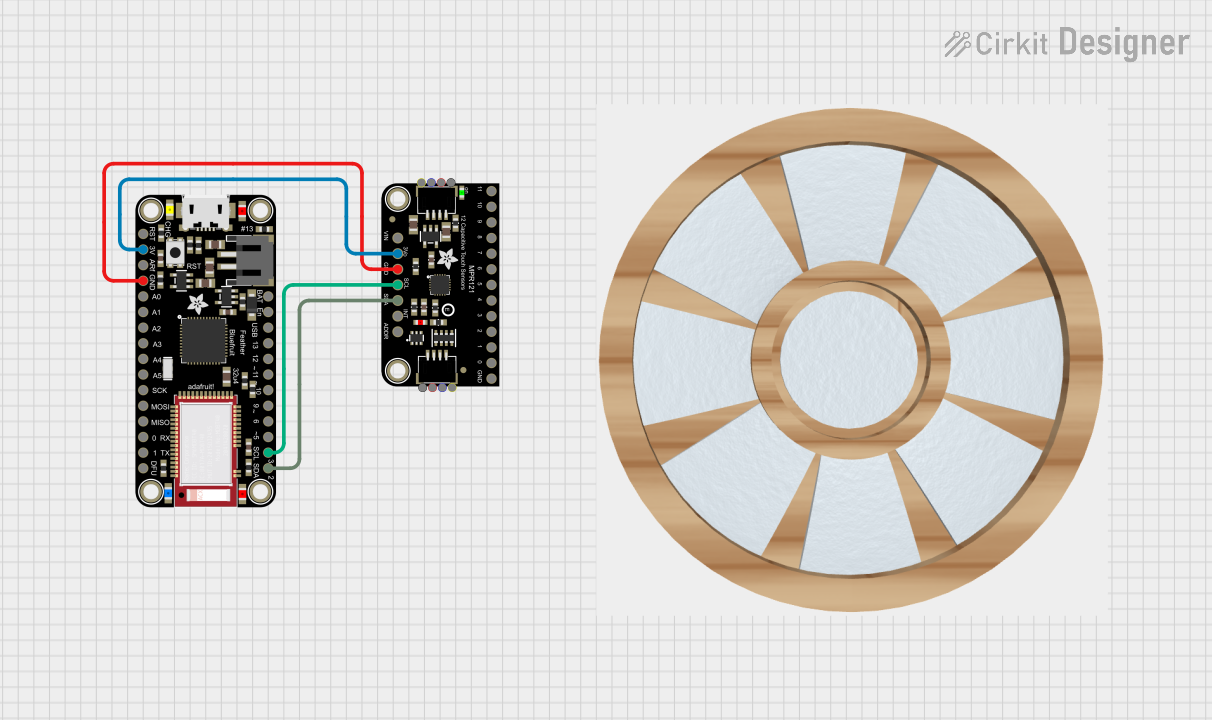
How to Use Adafruit Feather M0 Adalogger: Examples, Pinouts, and Specs

 Design with Adafruit Feather M0 Adalogger in Cirkit Designer
Design with Adafruit Feather M0 Adalogger in Cirkit DesignerIntroduction
The Adafruit Feather M0 Adalogger is a versatile and portable development board that integrates the power of a microcontroller with the convenience of data logging. Based on the ATSAMD21G18 ARM Cortex M0 processor, it offers a rich set of features including an onboard microSD card slot for data storage and a real-time clock (RTC) for time-stamping data. This makes it an excellent choice for projects requiring data collection, time-sensitive operations, or portable instrumentation.
Explore Projects Built with Adafruit Feather M0 Adalogger

 Open Project in Cirkit Designer
Open Project in Cirkit Designer
 Open Project in Cirkit Designer
Open Project in Cirkit Designer
 Open Project in Cirkit Designer
Open Project in Cirkit Designer
 Open Project in Cirkit Designer
Open Project in Cirkit DesignerExplore Projects Built with Adafruit Feather M0 Adalogger

 Open Project in Cirkit Designer
Open Project in Cirkit Designer
 Open Project in Cirkit Designer
Open Project in Cirkit Designer
 Open Project in Cirkit Designer
Open Project in Cirkit Designer
 Open Project in Cirkit Designer
Open Project in Cirkit DesignerCommon Applications and Use Cases
- Environmental data logging (temperature, humidity, pressure)
- Time-lapse photography with time-stamped data
- Portable weather stations
- Wearable health and fitness trackers
- IoT devices with data backup on SD card
Technical Specifications
Key Technical Details
- Microcontroller: ATSAMD21G18, 32-bit ARM Cortex M0+
- Operating Voltage: 3.3V
- Input Voltage: 3.7-6V via battery and USB, 5V via USB
- Digital I/O Pins: 20
- PWM Channels: 10
- Analog Input Channels: 6 (12-bit ADC)
- Analog Output Channels: 1 (10-bit DAC)
- Flash Memory: 256KB
- SRAM: 32KB
- Clock Speed: 48 MHz
- RTC: With backup battery support
- MicroSD Slot: Supports standard and high capacity SD cards
Pin Configuration and Descriptions
| Pin Number | Function | Description |
|---|---|---|
| 1 | GND | Ground |
| 2 | BAT | Battery positive voltage (3.7-4.2V LiPo) |
| 3 | EN | Enable pin for the 3.3V regulator |
| 4 | USB | USB power (5V from host computer) |
| 5-14 | Digital Pins | Digital I/O, PWM output, or interrupt detection |
| 15-20 | Analog Pins | Analog inputs or digital I/O |
| 21 | AREF | Analog reference voltage |
| 22 | SCK | SPI clock |
| 23 | MISO | SPI Master In Slave Out |
| 24 | MOSI | SPI Master Out Slave In |
| 25 | SDA | I2C Data |
| 26 | SCL | I2C Clock |
| 27 | RX | UART Receive |
| 28 | TX | UART Transmit |
| 29 | RST | Reset pin |
| 30 | 3V | 3.3V output from the regulator |
Usage Instructions
How to Use the Component in a Circuit
Powering the Board: The Feather M0 Adalogger can be powered via USB, a LiPo battery, or an external power supply. Ensure that the power source is within the specified voltage range.
Connecting Peripherals: Connect sensors and peripherals to the appropriate pins. Use digital or analog pins based on the requirements of the peripheral.
Data Logging: Insert a formatted microSD card into the slot for data logging. Use the onboard RTC to timestamp your data.
Programming: The board can be programmed via the Arduino IDE. Select "Adafruit Feather M0" from the board manager.
Important Considerations and Best Practices
- Always disconnect the battery or power supply before making or altering connections.
- Use a regulated power supply to prevent damage to the board.
- Format the SD card as FAT16 or FAT32 before use.
- To maintain accurate time, ensure the RTC battery is charged and properly installed.
- Avoid exposing the board to static electricity or physical stress.
Troubleshooting and FAQs
Common Issues
- Board not recognized by computer: Check the USB cable and connections. Ensure the correct drivers are installed.
- SD card not working: Verify that the SD card is formatted correctly and is not corrupted.
- Inaccurate RTC time: Check the RTC battery and replace it if necessary.
Solutions and Tips for Troubleshooting
- If the board is not recognized, try using a different USB port or cable.
- For SD card issues, try formatting the card on a computer or testing with a different card.
- Ensure that the RTC battery is properly installed and making good contact.
FAQs
Q: Can I power the Feather M0 Adalogger with a 5V supply? A: Yes, you can power it through the USB connection with 5V, but do not apply 5V directly to the 3.3V pin.
Q: How do I set the time on the RTC? A: You can set the time on the RTC using the Arduino library for the RTC chip. Refer to the example code provided by Adafruit.
Q: What is the maximum size of SD card supported? A: The Feather M0 Adalogger supports SD cards up to 32GB formatted as FAT16 or FAT32.
Example Code for Arduino UNO
Below is an example code snippet for initializing the RTC and SD card on the Adafruit Feather M0 Adalogger. This code is written for use with the Arduino IDE.
#include <SPI.h>
#include <SD.h>
#include <Wire.h>
#include <RTClib.h>
RTC_PCF8523 rtc;
const int chipSelect = 10; // SD card CS pin
void setup() {
Serial.begin(9600);
// Initialize the RTC
if (!rtc.begin()) {
Serial.println("Couldn't find RTC");
while (1);
}
// Initialize the SD card
Serial.print("Initializing SD card...");
if (!SD.begin(chipSelect)) {
Serial.println("initialization failed!");
return;
}
Serial.println("initialization done.");
}
void loop() {
// Create or open a file and write data to it
File dataFile = SD.open("datalog.txt", FILE_WRITE);
if (dataFile) {
DateTime now = rtc.now(); // Get current time
dataFile.print(now.unixtime()); // Write the time to the file
dataFile.print(", ");
// Write sensor data here
dataFile.println("Sensor data");
dataFile.close(); // Close the file
} else {
// if the file isn't open, pop up an error:
Serial.println("error opening datalog.txt");
}
delay(1000); // Wait for 1 second before the next loop
}
Remember to wrap the code comments as needed to limit line length to 80 characters. This example assumes you have the necessary libraries installed and that you have set the correct board and port in the Arduino IDE.